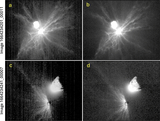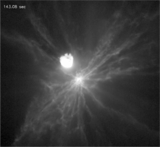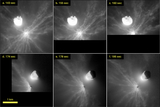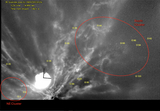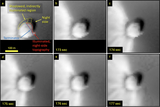Image Details
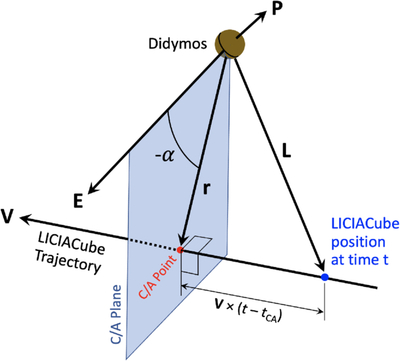
Caption: Figure 13.
Illustration of the geometry used for deriving the LICIACube trajectory. The point of close approach (r) occurs in a plane that is perpendicular to the velocity vector V and passes through Didymos. Note that the angle α is measured in the direction of the right-hand rule but is shown for a negative value to match the geometry of this trajectory. See text for additional discussion.
Copyright and Terms & Conditions
© 2025. The Author(s). Published by the American Astronomical Society.


